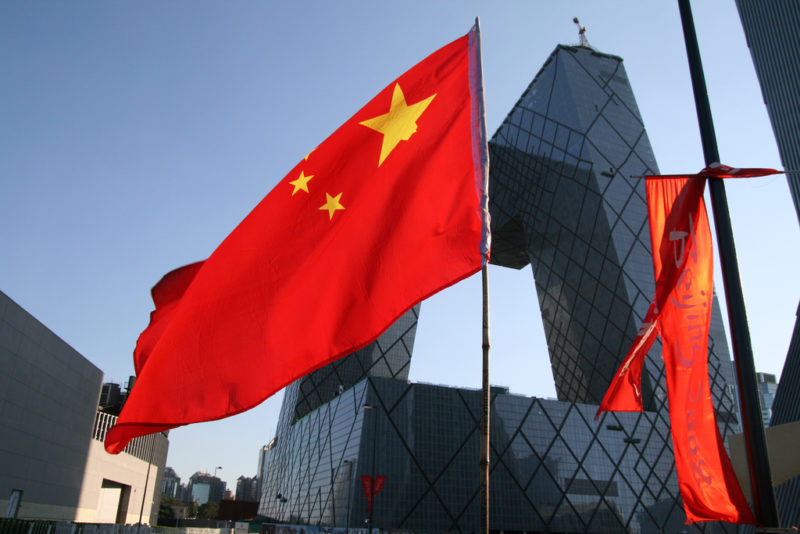
As the People’s Republic of China (PRC) has grown in wealth and power, Beijing has devoted immense resources to managing the country’s image and influencing audiences abroad. Its efforts include but are not limited to international broadcasting, professional exchange programs, academic partnerships, pressure on foreign media outlets, and the development of state-backed and/or state-friendly nongovernmental organizations and private sector partnerships.
The International Forum for Democratic Studies asked five leading experts on Beijing’s global influence to address the question below (their answers have been edited for length and clarity, and do not necessarily reflect the views of the National Endowment for Democracy):
Considering the scale and breadth of China’s investments in its own form of ‘soft power’ (including international broadcasting, telecommunications infrastructure, people-to-people diplomacy, cultural institutes, educational exchanges, and other such activities), what objectives is the government pursuing, and how would you characterize and measure the political benefits it actually accrues?
The current and potential future impact of the CCP’s soft power tactics should not be underestimated, be it in terms of press freedom, economics, or national security.
-Sarah Cook, Freedom House

Sarah Cook is a senior research analyst for East Asia at Freedom House and director of its China Media Bulletin, a monthly digest in English and Chinese providing news and analysis on media freedom developments related to China. Cook is also the author of three special reports about China including “The Long Shadow of Chinese Censorship” (Center for International Media Assistance, 2013) and more recently, “The Battle for China’s Spirit“(Freedom House, 2017). Her comments and writings have been published by CNN, The Wall Street Journal, and Foreign Policy, and she has testified before the U.S. Congressional-Executive Commission on China. She tweets @Sarah_G_Cook.
The Chinese Communist Party’s (CCP’s) media influence and other soft power campaigns, which include various forms of propaganda and censorship, target two audiences—overseas Chinese and non-Chinese foreigners—with three primary aims: to promote a positive view of China and benign perspective of the CCP regime; to encourage foreign investment in China and openness to Chinese investment abroad; and to suppress voices, investigations, and political commentary that present the Chinese government negatively.
In the media sphere, the impact of the regime’s efforts is evident from the fact that the “China factor” is palpably present at outlets around the world. More specifically, the CCP has proved largely successful at establishing dominance over Chinese-language media outside China, especially television; provoking self-censorship and editorial shifts, including at prominent Western outlets like Bloomberg and important regional papers like the South China Morning Post; and imposing financial difficulties on disfavored media, be they the New York Times, Hong Kong’s Apple Daily, or offshore activist initiatives like Boxun or New Tang Dynasty Television (NTDTV).
Still, there are clear limits to Beijing’s influence. Media outlets worldwide daily publish news the CCP wants hidden. Many non-Chinese foreigners are not attracted to or convinced by Chinese government propaganda, particularly when its state origins are known. Targeted outlets still disseminate their content to millions in China and elsewhere. And in the relatively competitive online sphere, alternative news stations like NTDTV outrank [the Chinese state-backed CCTV, recently re-branded as China Global Television, or CGTN,] in popularity in places like the United States.
Nevertheless, the current and potential future impact of the CCP’s soft power tactics should not be underestimated, be it in terms of press freedom, economics, or national security.
There is a strong desire by the CCP… to “gain face” for China internationally and to have China’s perspective on international affairs heard and understood.
-Anne-Marie Brady, University of Canterbury
 Professor Anne-Marie Brady is a Global Fellow at the Woodrow Wilson Center for International Scholars who tweets @thepolarjournal. She is a specialist in Chinese and polar politics based at the University of Canterbury, Christchurch, New Zealand. Anne-Marie is the executive editor of The Polar Journal, and has written nine books and over forty scholarly articles on topics including China’s modern propaganda system, foreigner-management in China, and competing foreign policy interests in Antarctica. Read her 2015 Journal of Democracy article, “China’s Foreign Propaganda Machine,” here.
Professor Anne-Marie Brady is a Global Fellow at the Woodrow Wilson Center for International Scholars who tweets @thepolarjournal. She is a specialist in Chinese and polar politics based at the University of Canterbury, Christchurch, New Zealand. Anne-Marie is the executive editor of The Polar Journal, and has written nine books and over forty scholarly articles on topics including China’s modern propaganda system, foreigner-management in China, and competing foreign policy interests in Antarctica. Read her 2015 Journal of Democracy article, “China’s Foreign Propaganda Machine,” here.
China is a deeply insecure party-state and is seeking to restore and demonstrate its international status. China’s national narrative is one of 150 years of victimhood. The CCP government is determined to restore China’s international status and prestige, and to become a rich nation with a strong military. There is a strong desire by the CCP, widely supported by many Chinese intellectuals, to “gain face” for China internationally and to have China’s perspective on international affairs heard and understood; this is regarded as part and parcel of China’s legitimate protection of its interests and re-ordering of the strategic environment it has faced since 1950.
The government believes its perspectives on international affairs are misrepresented in the Western media, and that the outside world has a distorted and negative picture of contemporary China.
Even more so than previous leaders, Xi Jinping has led a massive expansion of efforts to influence foreign audiences. Xi calls it “telling a good story about China.” Xi Jinping has identified Chinese culture as an asset which can be promoted to bring about a better global public opinion of China. The One Belt One Road Initiative is also a core theme of the Xi government’s foreign influence activities and can be thought of as more a massive propaganda campaign than it is an actual activity. Military propaganda, promoting China’s new capabilities and objectives to the outside world, has also become important under Xi, as his government has followed a more proactive foreign propaganda strategy.
China’s greatest source of soft power is arguably the great number of foreigners who are moved by hopes of access to the enormous Chinese market.
-Evan Ellis, US Army War College Strategic Studies Institute
 Evan Ellis is a research professor of Latin American Studies at the US Army War College Strategic Studies Institute with a focus on the region’s relationships with China and other non-Western Hemisphere actors, as well as transnational organized crime and populism in the region. He has published over 180 works, including the 2009 book China in Latin America: The Whats and Wherefores, the 2013 book The Strategic Dimension of Chinese Engagement with Latin America, and the 2014 book, China on the Ground in Latin America. His newest book, Transnational Organized Crime in Latin America and the Caribbean, is due out in late 2017. He tweets @REvanEllis.
Evan Ellis is a research professor of Latin American Studies at the US Army War College Strategic Studies Institute with a focus on the region’s relationships with China and other non-Western Hemisphere actors, as well as transnational organized crime and populism in the region. He has published over 180 works, including the 2009 book China in Latin America: The Whats and Wherefores, the 2013 book The Strategic Dimension of Chinese Engagement with Latin America, and the 2014 book, China on the Ground in Latin America. His newest book, Transnational Organized Crime in Latin America and the Caribbean, is due out in late 2017. He tweets @REvanEllis.
China simultaneously pursues a broad array of initiatives to develop goodwill, useful relationships, and influence international actors in support of its strategic economic and political objectives. China has consistently acknowledged its focus on people-to-people exchanges in its 2008 and 2016 policy white papers toward Latin America, and other official statements of its policy toward the region, although the meaning of such open pronouncements, the specific details, and intentions behind them are not fully understood.
Some, such as its Confucius Institutes and other Hanban initiatives, are rooted in the pride that China has maintained since the time of its ancient dynasties: that the peoples with which it interacts will be awed by the grandeur of Chinese civilization into adopting a posture favorable toward China. People-to-people exchanges advance Chinese knowledge about the world to which its security and prosperity is bound, while also nurturing relationships that may economically or otherwise benefit the Chinese state in the future. Chinese “friendship committees” and party-to-party ties have been used to obtain information and influence elites in target countries, including helping to convince countries recognizing Taiwan to change their position. Party-to-party ties also serve to maintain contact and goodwill with parties out of power.
China’s providing of media services influences how foreigners perceive China and its people, and secondarily, how they perceive other international actors and events. Yet China’s greatest source of soft power is arguably the great number of foreigners who are moved by hopes of access to the enormous Chinese market, sources of Chinese finance, and well-resourced Chinese business partners.
The effect of China’s goodwill campaign can be seen in the millions of students who invest time in studying mandarin Chinese, the businessmen who invest billions of dollars seeking Chinese markets, and foreign leaders who are careful to not offend China in their rhetoric, due to its growing importance.
China has been able to influence foreign audiences by limiting access to independent Chinese voices.
-Martin Hála, Sinopsis
 Martin Hála is the founder and director of Sinopsis.cz, a joint project between AcaMedia and the Institute of East Asian Studies at Charles University in Prague. He studied in Prague, Shanghai, Berkeley, and Harvard, taught in Prague and Bratislava, and led projects in various countries in Asia. In 2014-15, he was the regional manager for the Asia-Pacific region at the Open Society Foundations.
Martin Hála is the founder and director of Sinopsis.cz, a joint project between AcaMedia and the Institute of East Asian Studies at Charles University in Prague. He studied in Prague, Shanghai, Berkeley, and Harvard, taught in Prague and Bratislava, and led projects in various countries in Asia. In 2014-15, he was the regional manager for the Asia-Pacific region at the Open Society Foundations.
The term “soft power” (ruan shili, 软实力) is of relatively new coinage in China, similar to the near synonymous “discursive power” (huayuquan, 话语权). As replacements for the traditional “external propaganda” (duiwai xuanchuan, 对外宣传), these terms reflect an upgrade to Chinese propaganda, which aims to serve the new global ambitions of the PRC leadership as articulated in the new concept of “Two Guidances” (liangge yindao, 两个引导), i.e. China as the guiding force in globalization and international security.
The “Two Guidances” present an extraordinary claim for a country with a less-than-open economy and an unappealing record in domestic and foreign security matters. China’s modernized propaganda machine is designed to dispel foreign concerns about China and the new role Beijing covets. Using a variety of channels, many adopted from Western media and marketing techniques, Beijing presents China as a benign power, a champion of open markets amidst backlash against globalization, a bastion of stability, and an enormous business opportunity dispensing profits to all in “win-win” arrangements. In the past, China’s external propaganda mostly aimed to neutralize foreign criticism of domestic repression; with its rising self-confidence in recent years, China now offers itself as a “solution” (zhongguo fangan, 中国方案) to the outside world.
In the struggle of ideas and narratives, China increasingly employs the advantages of a closed domestic system while enjoying open access to audiences abroad, now made even easier by the crisis of Western media’s traditional business model and China’s deep pockets. Because of this underlying imbalance, China has been able to influence foreign audiences by limiting access to independent Chinese voices.
China’s “discursive power” empowers the government, not the public. The structural imbalance between domestic and international access to information allows the CCP to derive significant political advantage from its propaganda machine, as demonstrated by the substantial inroads China has made into public discourse in many countries.
China’s rising hard power will constrain its soft power.
-Josh Kurlantzick, Council on Foreign Relations
 Joshua Kurlantzick is senior fellow for Southeast Asia at the Council on Foreign Relations. He is author, most recently, of A Great Place to Have a War: America in Laos and the Birth of a Military CIA. Kurlantzick was previously a visiting scholar at the Carnegie Endowment for International Peace, where he studied Southeast Asian politics and economics and China’s relations with Southeast Asia, including Chinese investment, aid, and diplomacy. Previously, he was a fellow at the University of Southern California Center on Public Diplomacy and a fellow at the Pacific Council on International Policy. You can read more of his views on this topic in a series of three May 2017 blog posts published by the Council on Foreign Relations. He tweets @JoshKurlantzick.
Joshua Kurlantzick is senior fellow for Southeast Asia at the Council on Foreign Relations. He is author, most recently, of A Great Place to Have a War: America in Laos and the Birth of a Military CIA. Kurlantzick was previously a visiting scholar at the Carnegie Endowment for International Peace, where he studied Southeast Asian politics and economics and China’s relations with Southeast Asia, including Chinese investment, aid, and diplomacy. Previously, he was a fellow at the University of Southern California Center on Public Diplomacy and a fellow at the Pacific Council on International Policy. You can read more of his views on this topic in a series of three May 2017 blog posts published by the Council on Foreign Relations. He tweets @JoshKurlantzick.
Over the past two decades, successive Chinese governments have invested heavily in soft power. Beginning in the early 2000s, Beijing began dramatically boosting its aid outlays, promoting new cultural and educational exchanges, expanding and modernizing Chinese media outlets overseas (some, potentially, with Russia’s outlets as a model), and increasing training for foreign officials in China, among other measures. Overall, the goal of these soft power efforts seems similar to those of other major powers: to bolster China’s reputation overseas and make it easier for Beijing to gain other, more tangible foreign policy goals—including trade deals, joint military operations, and closer diplomatic relations.
In 2007, I published a book, Charm Offensive, arguing that Beijing’s soft power strategy appeared to be succeeding. China had raised its favorability around the world and began to soothe other Asian countries’ concerns about its growing diplomatic, economic, and strategic influence. However, this was at a time when Beijing was still relatively weak, militarily, and was trying to avoid overt flexing of its military and economic might. In the past decade, despite the fact that Beijing has upped its soft power efforts since 2007, its soft power appeal has not grown.
If anything, China’s favorability has declined, particularly in other parts of Asia. China has expanded its military and economic power so dramatically in parts of Asia, especially Southeast Asia, that its soft power outreach simply cannot outweigh the impact of its hard power offensive. Countries like Vietnam and even Singapore and Indonesia have become increasingly fearful of China’s claims in disputed waters. Beijing’s soft power strategies have remained more effective in regions of the world less impacted by its hard power, such as parts of Europe, Latin America, and Africa. But even in these areas, China’s rising hard power will constrain its soft power.
For more “Big Questions,” click here.
FOR MORE FROM NED’S INTERNATIONAL FORUM ON THIS TOPIC, SEE:
International Forum Director Shanthi Kalathil’s “Beyond the Great Firewall: How China Became a Global Information Power” (Center for International Media Assistance, 2017).
National Endowment for Democracy Vice President for Studies and Analysis Christopher Walker’s “The Hijacking of Soft Power” (Journal of Democracy, 2016).

